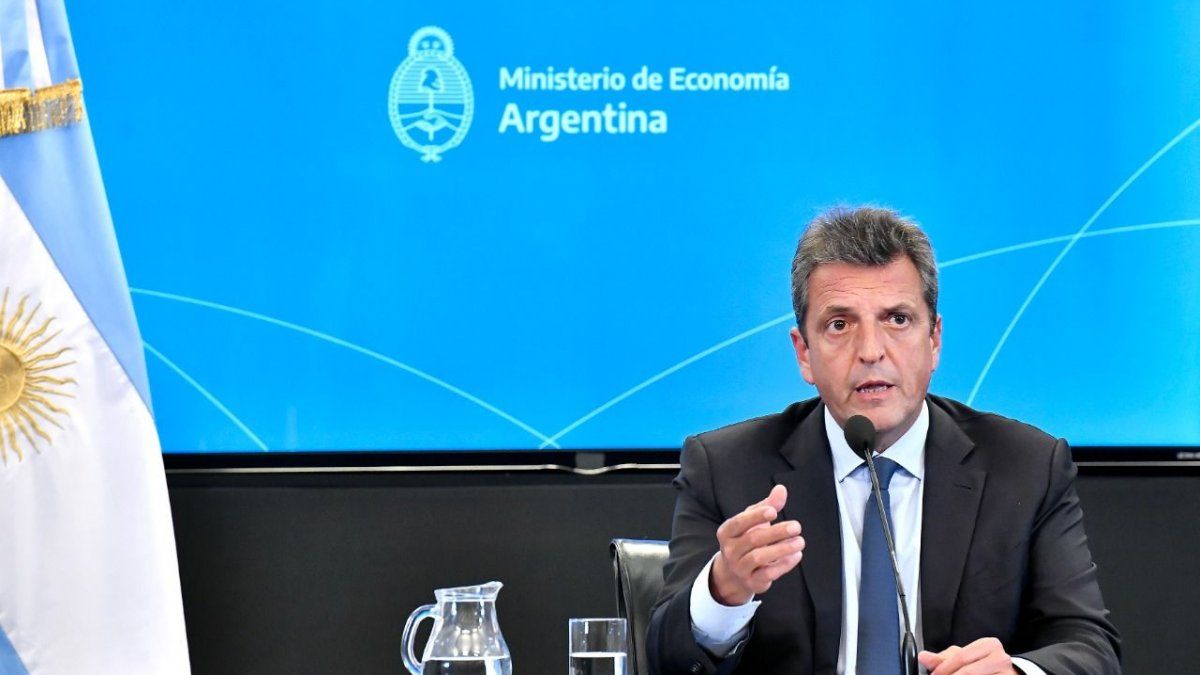The public debt Argentina reached the u$s403.809 millions in June 2023, an increase of $4,977 million since May, according to data from Finance Secretary of the Nation, and amounts in foreign currency represent 64% of that totalwhile obligations in local currency they are 36%.
The debt in pesos increased by US$6,812 million in Junewhile foreign currency debt fell by u4s1,852 million, According to official data, according to the last report of the Secretariat on the stock of debt.
Likewise, the work concludes that the Argentine public debt accumulated an increase of US$25,291 million in one year. This is compared to US$378,518 million in June 2022. While the increase was US$90,000 million since Alberto Fernández came to power, at the end of 2019.
Dujovne placed more debt in pesos: $33.698 M in Letes
Economy issues debt in pesos and dollars.
Debt in pesos: why it increased
Half of the increase in local currency debt is explained by the tenders that the Treasury carried out to finance itself and, through which it collected $741,515 million in the first tender in July, enough to cancel the $621,253 million that it had to face in concept of debt maturities and add additional net financing for $120,263 million. In addition, he got additional financing for $20,418 million in a second bidding round.
However, the Argentine public debt is at its highest levels in nearly 20 years, while the ratio between debt and GDP remained stable at around 85% during the first quarter, far from the peak left by the previous government, which was 89.8% in 2019 and more than 100% that threw the first year of management of Fernandez.
Debt in pesos: Economy increased net funding to $140,000 million
He The Ministry of Economy managed to add $20,418 million more to the net financing obtained last Friday in the first of the two debt tenders in pesos of the month, with which the roll-over in local currency stretched to $140,000 million, according to the Palacio de Hacienda.
In the session reserved for entities that are part of the Market Makers group, the preference was in the LEDE maturing on October 31, that pays a fixed rate. Of the total awarded, these they took $15,062 million and the rest were inflation-indexed bills.
Thus, the Ministry of Finance managed to raise the refinancing rate to 122% in relation to the maturities of the first half of July, which reached $621,000 million.
With this, it was confirmed that Interest in fixed-rate bills grew in the market, given the slowdown in inflation June, which marked 6%. The market expects inflation to stabilize at 7% per month for at least the next three months, according to the prices of the titles, when measuring the differences in rates between papers indexed by CER and the LEDE.
The price that the Government is paying to de-index a part of the debt in pesos is 140% effective per year. In the first call of the month, slightly more than 26% of the total placed corresponded to LEDES and 11% to LELITES that expire at the end of July, which took the Common Investment Funds (FCI).
Source: Ambito




